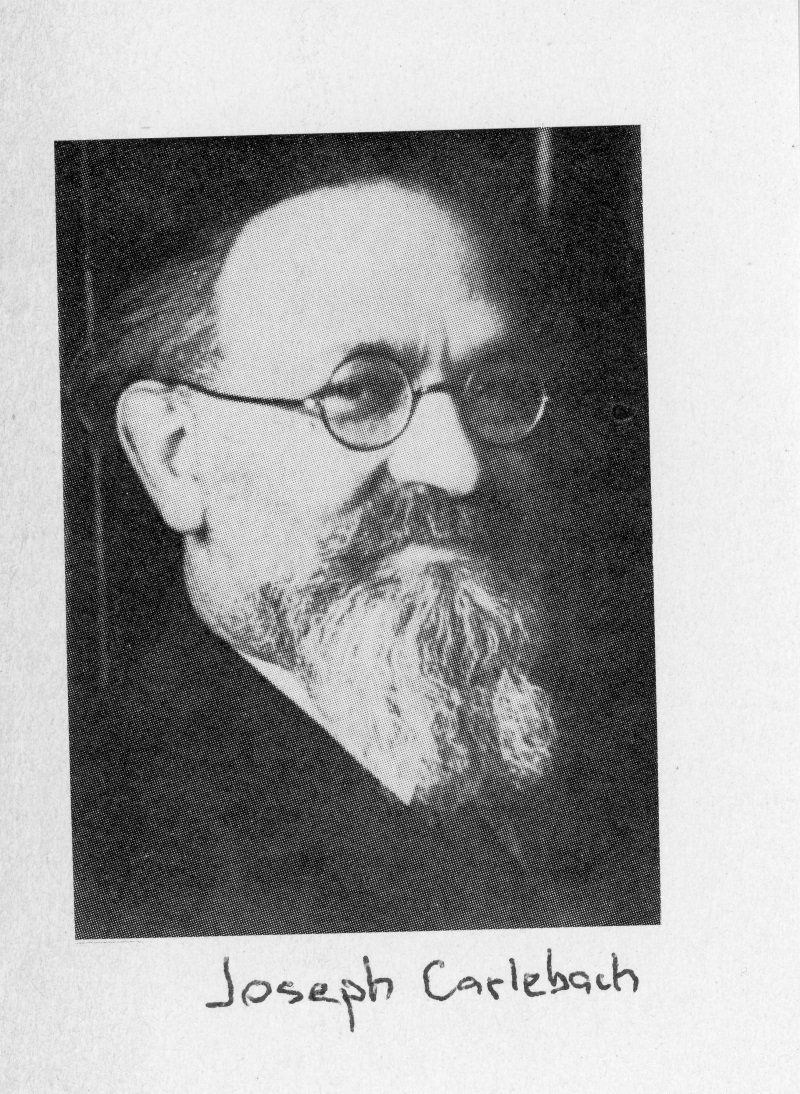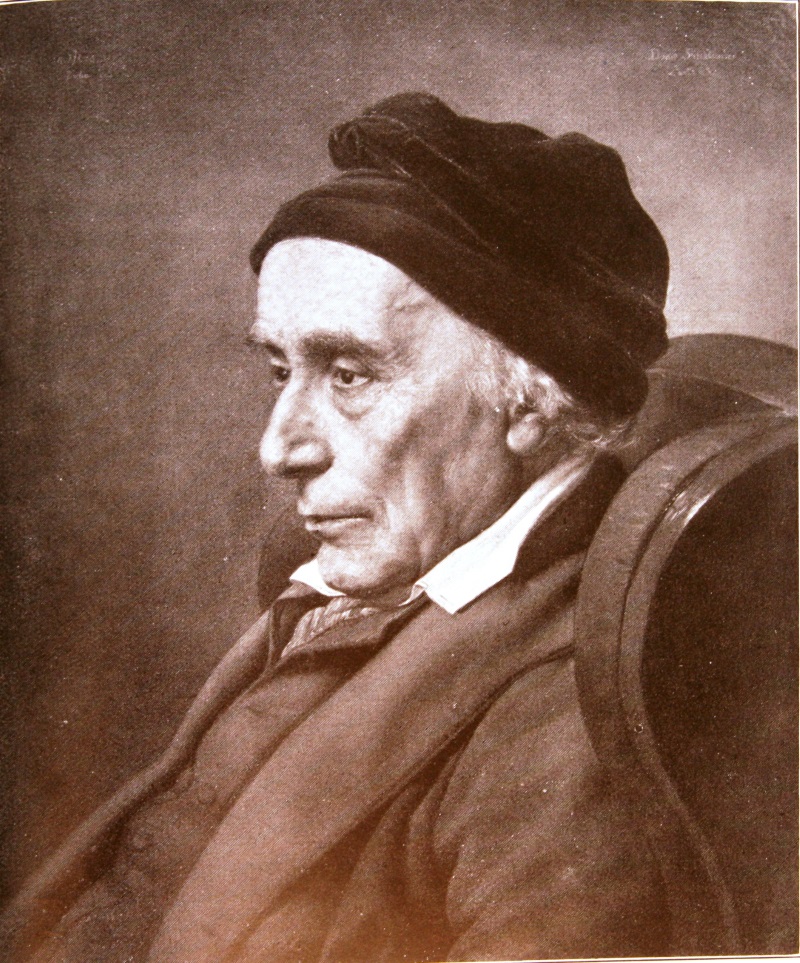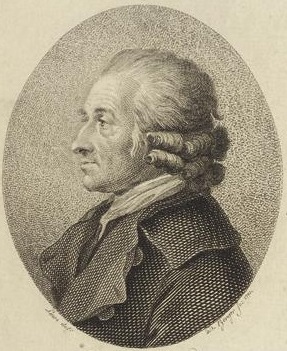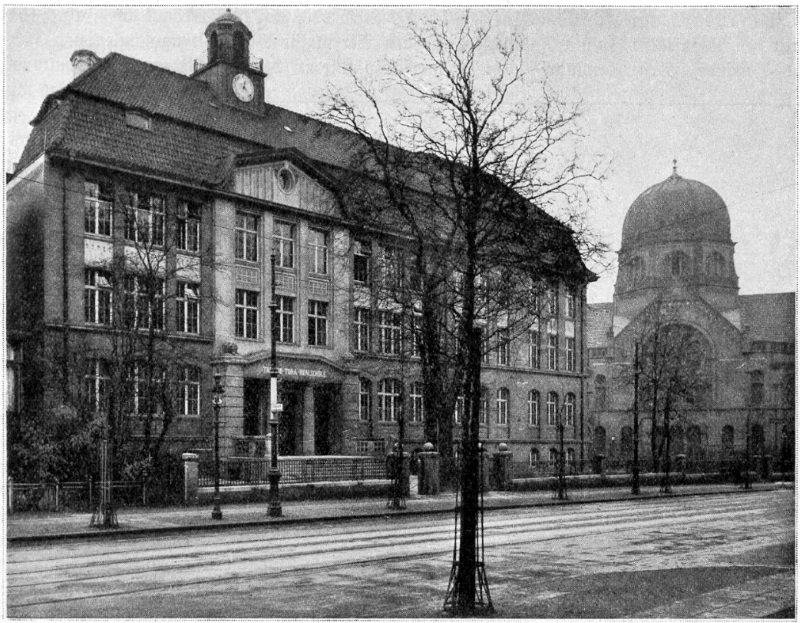The development of Jewish education and learning can be divided into three phases. The first of these stretches from the Early Modern period to the beginning of secularization during the age of Enlightenment (i. e. from ca. 1500 until 1800). During this period, the relevant institutions run by Jewish congregations were shaped exclusively by religion: While the cheder offered elementary level instruction in religion in Hebrew, the congregation’s own Talmud Torah schools educated poor children. The sons and sometimes also the daughters of wealthy families received lessons from private tutors. Girls probably received religious education mostly in the form of maternal instruction in the religious practices of domestic life. The Bet Ha-midrash, a study hall that was part of the synagogue, was a place of study and discussion of religious writings for adult men while the Yeshiva was a school where future teachers of religion and rabbis went to study the Talmud.
Beginning with the adoption of the ideas of the European Enlightenment in education, the second phase falls into the age of secularization (from ca. 1800 until 1942). Education and learning, both central terms to the political philosophy of the Enlightenment and classical liberalism, expressed a specific agenda: to fight superstition and irreligiousness, to liberate from religious paternalism, to reject the common method of religious instruction, to combine religious education with instruction in Hebrew, the vernacular language and the sciences, to teach morality, independent thinking, and the use of reason, and to adopt those convictions and attitudes necessary for a bourgeois profession, mindset and lifestyle. Berlin’s Jewish Free School Jüdische Freischule, whose mission was the “education of the human being” according to the abovementioned principles, was exemplary for this concept.
At the same time, the process of secularization was characterized by controversies between the adherents to tradition and the proponents of modernization. Thus schools of opposing ideological and religious orientations were founded throughout the 19th century. Despite different attitudes towards the relation between science and religion in the education of young people, the school as an institution functioned as a lever for the Jews’ civic and legal emancipation well as their economic upward mobility in the 19th century; this was especially true in a merchant city such as Hamburg. Thus schools around the year 1800 and those of the 1930s were worlds apart in terms of their number and differentiation, the extent of education for boys and girls, teacher qualification and teaching methods, the relation between languages and sciences in the curriculum and even in terms of religious education. The forced closure of Jewish schools by the National Socialist regime marks the end of this period.
The reestablishment of a system of Jewish education and learning in postwar Germany can be considered the beginning of the third phase. In 1966, the first elementary school was opened at the Philantropin, a Jewish school with a long tradition in Frankfurt am Main, followed by another one opened in Munich in 1969. Most of the new school openings occurred after 2000. Among those is Hamburg’s Joseph-Carlebach-School, located in the former Talmud Torah School at Grindelhof.
Learning has long been highly valued in Judaism. The Hebrew writings of Antiquity already emphasize the importance of the study of religious works which are considered the word of God. Observing it gives the congregation direction and constitutes it as a community of orthodox believers. Learning and study thus are synonymous with understanding the God-given laws for the purpose of applying them to all aspects of practical life in the community.
Little is known about the social history of this instruction, however. Few sources are available since it was not until the time of secularization that supervision of the educational system gradually passed to the state and bureaucratic requirements arose. The most common type of school until the age of Enlightenment was the cheder. In establishing it, a congregation fulfilled its duty to provide fundamental religious education to its children and ensure their literacy. The majority of the 39 institutions designated “schools” existing in Hamburg in 1732 most likely were cheders. A cheder often merely consisted of a room in the living quarters of the melamed, the children’s teacher, who often also served as cantor or shohet. Many melamdim were itinerant teachers. Children from the age of 4-5 to 12-13 were taught at these schools. The curriculum consisted of learning to read Hebrew using the Torah or the Talmud for older students. Learning meant memorizing, repeating after the teacher, and an endless chorus of repeating lessons. There also was instruction in methods of calculation relevant to trade. In Ashkenazi communities, the language of instruction was Yiddish, and writing was taught using Hebrew letters, not Latin ones. Acquiring secular knowledge was considered a waste of time at best, and reading anything but the sacred texts was frowned upon. In Sephardic communities, lessons were structured differently; the language of instruction was Spanish or, as in Hamburg, Portuguese. The attitude towards acquiring secular knowledge and the local language was a different one as well. The Sephardim’s open-mindedness towards languages and secular knowledge was considered exemplary by many maskilim. One has to bear in mind, however, that current academic knowledge has been informed by accounts of teaching practices in (Ashkenazi) cheders documented in the 18th century. At this point in time, the types of schools common in many communities were already in a deep crisis caused by secularization and social change. The accounts were often written by critics influenced by the Enlightenment.
Religious education of poor children traditionally was the task of the Talmud Torah schools. They were supervised by the congregation’s leadership and financed by charitable gifts from wealthy members of the community. The teachers were Talmud scholars or advanced Talmud students. The main subject of instruction were excerpts from the Talmud, the central work of rabbinic literature comprised of the tractates of the Mishnah and the commentaries of the Gemara. Like the cheder, the Modern Age: Jewish proponents of Enlightenment, maskilim, criticized the teachers’ knowledge as one-sided in its limitation to the Talmud; moreover, they thought the text was discussed without any consideration of the children’s age and capacity of comprehension while study of the Torah and the Hebrew language were omitted altogether.
Meanwhile, wealthy families had their children educated in subjects including languages and science by private tutors throughout the entire Modern Age. Around 1800, their sons were already able to attend a Gymnasium in some cities, including Hamburg. Sources also show that parents living in small towns without a Jewish school sent their children to the town’s Christian public school.
Girls were mostly educated at home. The goal of their instruction, usually carried out by their mothers, was to prepare them for a correct, kosher running of their future household. The instruction manual widely used for this purpose was the so-called women’s bible Zeenah u-Reenah (1616), a translation and interpretation of the Pentateuch written in Yiddish. It was still published as late as 1930, in a new German edition edited by Bertha Pappenheim.
Yeshivas were schools for higher education devoted to the advanced study of the Talmud in order to train future generations of scholars, teachers, and rabbis. They were places where scholarly opinions were taught and passed on, often headed by famous Talmud scholars or rabbis, and served the purpose of creating written commentaries on the sacred texts. They differed significantly in terms of the level of scholarship, relevance, and longevity; the most influential Yeshivas whose reputation extended beyond regional borders existed in eastern European countries. In the Early Modern Age, the Yeshivas sometimes practiced pilpul, a dialectic method of studying issues of religious law rejected as pointless hairsplitting by Enlightenment Age critics. In the cultural area inhabited by Ashkenazi Jews, the first Yeshiva existed in Worms in the 11th century, and Yeshivas continued to be established well into recent history, as the example of the Yeshiva founded by Rabbi Joseph Carlebach in Hamburg in 1921 shows.

Joseph
Carlebach
Source: Picture
Database of the Institute for the History of the German Jews, PER00346
Another relevant institution was the house of study, Bet Ha-Midrash, called kloyz in Yiddish, which was often part of the synagogue, which is also called “shul” in Yiddish. These houses of study were financed by wealthy families. Scholars were invited for extended stays and in exchange discussed questions of the Talmud with men and boys eager for knowledge. Women and girls were excluded from personal participation. Along with the Yeshivas, these houses of study promoted a Europe-wide exchange on religious matters and especially on questions of legal practice throughout the Jewish community, yet this exchange also extended to studies in the sciences and linguistic theory aimed at a deeper understanding of the Torah.
The transition to the Modern Age and the process of secularization which characterized it caused a crisis for this conception of learning tied to the centrality of religion. The growth in world trade beginning in the 16th century, in which Sephardic Jews had a major share in a port city like Hamburg, the development of modern science, the distribution of writings as a result of the invention of the printing press, the reevaluation of Ancient Greek philosophy by the Humanists, and not least the Age of Enlightenment — all of these developments produced a changed conception of the world. The emergence of a capitalist economy created not only new ways of earning a living, but also new sociocultural milieus with different lifestyles, opinions, and attitudes. Aside from the traditional urban middle class organized in guilds and crafts from which Jews were excluded, an initially small mercantile middle class emerged. It was made up of Reformed Protestants as well as Jews. It was this new, educated mercantile middle class, which included the new type of intellectuals, namely the proponents of Enlightenment, which carried the process of modernization and secularization. It positioned itself against the defenders of outdated structures, and it also redefined education and child-rearing, broke down the existing, strictly religious order of knowledge and questioned traditional authorities — both Christian and Jewish.
Rabbinical jurisdiction and autonomy in matters of religious education, which Jewish communities had maintained throughout the Early Modern Age, were abated in the aftermath of the French Revolution. For the emergence of modern nation states rendered the legal emancipation of Jews as citizens and individuals peremptory, and thus giving up community autonomy became a necessary consequence. The champions of civic and legal emancipation of the Jews, such as Moses Mendelssohn and David Friedländer in Germany, had tirelessly campaigned for this.

David Friedländer,
portrait by Julius
Hübner, 1834
Source: Wikimedia Commons, public domain, Jahrhundertausstellung deutscher Kunst, Berlin 1900.
Other Jewish emancipators such as Naphtali Herz Wessely or Isaak Abraham Euchel, and in Hamburg especially Gabriel Riesser and Anton Rée, also renewed earlier demands made in various European countries for civic and legal equality between Jews and Christians and campaigned for a political restructuring of society which would integrate Jews culturally and socially while allowing them to maintain their faith. To this end the maskilim promoted the cultural translation of the ideas of European Enlightenment into Judaism. They studied the writings of John Locke, Jean Jacques Rousseau, Adam Smith, and other protagonists of the new moral philosophy. Moses Mendelssohn translated the Pentateuch into German using Hebrew letters—this alone was considered sacrilege in the eyes of traditionalists. Furthermore, he included commentary in order to make the sacred texts more accessible for uneducated Jews and especially for young people. Religious-moral education was supposed to accord with Enlightenment’s primacy of reason. In reform-oriented schools all over the German territories Mendelssohn’s translation of the Torah was used as a contemporary textbook for learning both the German and the Hebrew language. In reform-oriented prayer services, for example in Berlin and Hamburg, this step facilitated the introduction of sermons, singing, and sometimes prayer in the German language.
These changes did not occur without causing fundamental conflict with orthodox rabbis, who sought to preserve the traditional practices in education and religious services and not least their predominance within the community leadership, since the rabbi’s responsibility for overseeing the conduct of community members was now questioned as well. The nature of religious education for adolescents became a subject of controversy in every regard, from its funding to teacher qualifications, the definition of knowledge, and teaching methods.
This culture war Kulturkampf, as it was later called, between the defenders of tradition and the protagonists of modernization (existing in virtually the same form among Christians) was one of the most significant consequences the process of secularization produced. It led to the emergence of different orientations within Judaism and to the pluralization of Jewish life. Originating in the resulting controversies which essentially remained unresolved, a complex parallel of parental decisions regarding their children’s education and school enrollment patterns developed. In addition to the communal institutions, private schools were established, some of which admitted children of a different confession while others did not, and whose orientation was either orthodox, conservative, or liberal.

Naphtali Herz
Wessely
Source: Wikimedia Commons, public domain.
Following the example of the Jewish Free School Jüdische Freischule established in Berlin (1778), reformed schools where substantially altered religious education was combined with secular subjects had been founded in several German states. Concepts for a reform of education and instruction, programmatically summarized in the term “Bildung,” were conceived and in many cases realized, as the example of Hamburg’s Israelite Free School Israelitische Freischule (1815), which later became the Anton-Rée-Realschule, shows. In the end the newly established traditionalist and orthodox schools did not resist the draw of modernization either. The Talmud Torah School (1805) founded by Jewish Hamburg merchants and Talmud scholars, initially a charity school dedicated to religious instruction, was later transformed into a middle class high school and eventually into a modern Realschule where the required amount of secular knowledge was taught.

Black-and-white photography of the Talmud Tora School,
Bornplatz-Synagogue in the background
Source: Picture
Database of the Institute for the History of the German Jews, BAU00357,
published in: Hamburg und seine Bauten unter Berücksichtigung der Nachbarstädte
Altona und Wandsbek 1914, hrsg. v. Architekten- und Ingenieur-Verein zu
Hamburg, Hamburg 1914, S. 203, Abb. 295.
Two small charity schools for girls had been established (in 1798 and 1818) in Hamburg’s Neustadt [New Town]; in 1884, they were merged into the newly built Israelite Girls School Israelitische Töchterschule run by the community. In terms of its curriculum it was comparable to a girl’s high school: subjects taught included Hebrew and German, English, French, and as of 1910 physics, chemistry and home economics. The best students were also taught accounting and stenography in their senior year.
Overall several innovations arose from the process of secularization. One line of conflict between tradition and modernization emerged from the question whether the teaching of religion belonged in the same educational institution as the teaching of languages and secular sciences, for example. In the orthodox point of view, the study of the Talmud was considered inappropriate for girls—yet their instruction in languages and secular sciences was not categorically objected to. This fact which seems paradox at first not least explains the vigorous upward trend in Jewish girls’ education in the 19th century as well as the influx of Jewish women into the universities in the early 20th century.
The boom in middle class education and learning produced new patterns of acculturation which continued to exist in Wilhelmine Imperial Germany and the Weimar Republic. In the upper strata of Hamburg’s Jewish middle class, a pattern of choosing schools developed in which parents ascribed different yet complimentary functions to the schooling of their sons and daughters: schools were meant to prepare girls for maintaining Jewish religiosity in the home as part of the family’s original identity; therefore religious education was considered particularly important for them. Meanwhile schooling for boys was primarily aimed at integration into their social class: for them the same schools preferred by Christian parents belonging to the middle and upper class (and which did not offer instruction in Jewish religion) were chosen. Taking into account these patterns of schooling for boys and girls which continued to exist into the 20th century, it becomes evident that the Jewish middle and upper class by no means sought complete assimilation, as is often claimed in earlier literature on the subject.
All of this came to a sudden halt in the 1930s. Since the beginning of the National Socialist period, Jewish students and teachers had increasingly become subjected to repression. In Hamburg as in other places, a 1938 decree issued by the Ministry for Science and Education Reichsministerium für Wissenschaft, Erziehung und Volksbildung prohibiting Jews from attending public schools was enforced. In 1939, the Jewish Girls’ School was the second to last of Hamburg’s Jewish schools to close; those among its former students who had not emigrated were referred to the Talmud Torah School. The latter had to call itself “Elementary and High School for Jews” [Volks- und Oberschule für Juden] as of 1939 and, like all remaining Jewish Schools in Germany, was closed by a decree issued on June 30, 1942.
Beginning in the 1960s and continuing to this day, Jewish communities have been establishing state-approved schools, often including day care and preschools and offering education up to the Abitur High school graduation diploma required for admission to a university.. The following figures reveal how difficult these new beginnings were: while there were about 130 Jewish schools remaining in Germany in 1939, ten Jewish schools and just about two dozen Jewish day care facilities existed in Germany in 2015; all of them are under permanent police protection. And yet: there again are Jewish day care centers, elementary and secondary schools, rabbinical seminars, academic institutions and adult education facilities, religious education centers, study houses, educational associations and other institutions for out-of-school education in Germany today—not in their earlier numbers, but a remarkable diversity of them.
Although many Jews were indifferent to religion in the past and still are today, the culture wars brought on by secularization continue to shape the history of schools and education in Germany’s Jewish communities to this day. The ideological and religious differences between the orthodox, conservatives, and liberals also continue to exist because the problems of integration within the Jewish community and attempts to define and preserve Jewish identity arise time and again due to immigration from various parts of the world. After the Second World War, for example, many Jews from Iran and later from Russia and eastern European countries immigrated to Hamburg. The heterogeneity of these groups presents an immense challenge to the communities, and this is especially true for childcare and educational institutions with regard to their ability to integrate children from various backgrounds. Many things have to be reinvented and put to the test.
This text is licensed under a Creative Commons Attribution - Non commercial - No Derivatives 4.0 International License. As long as the work is unedited and you give appropriate credit according to the Recommended Citation, you may reuse and redistribute the material in any medium or format for non-commercial purposes.
Ingrid Lohmann (Thematic Focus: Education and Learning), Prof. Dr. phil, is Professor of the History of Ideas and Social History of Education at the University of Hamburg. Her research interests include the relations between economy and education since the beginning of the modern period, especially privatization and commercialization in the education and research sector, as well as Jewish history of education, focusing on the late Enlightenment in Germany.
Ingrid Lohmann, Education and Learning (translated by Insa Kummer), in: Key Documents of German-Jewish History, 22.09.2016. <https://dx.doi.org/10.23691/jgo:article-215.en.v1> [December 19, 2025].